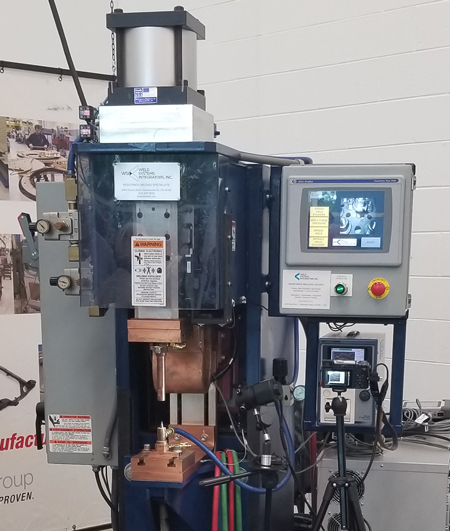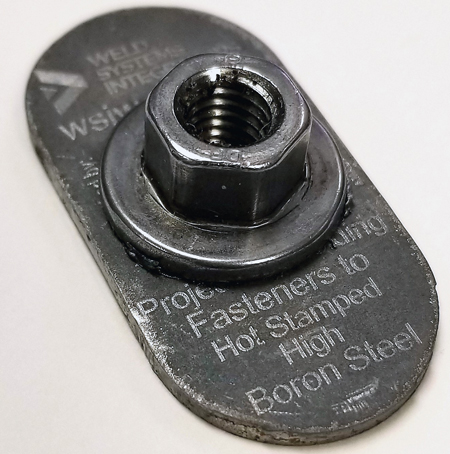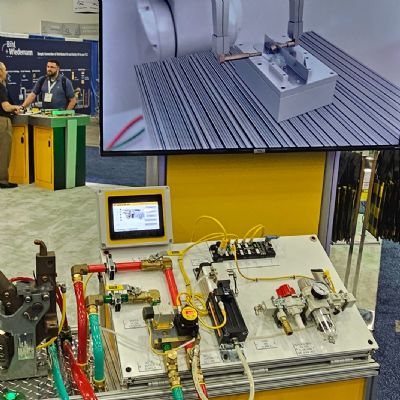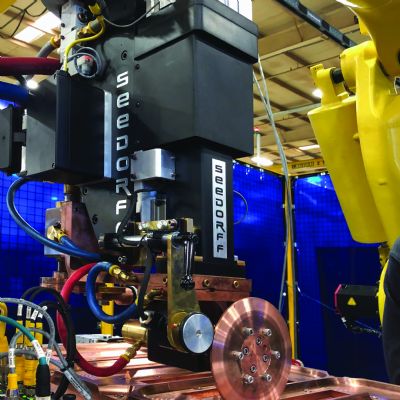Resistance Welding—A Fastening Option for Hot Stamping
November 1, 2019Comments
As hot stamping gains a foothold in North America among automotive OEMs and their Tier suppliers, other technologies, such as capacitive discharge (CD) resistance welding, can be applied to optimize the effectiveness of the process.
 |
| Attendees of MetalForming magazine’s Hot Stamping Experience and Tech Tour, held this past September in Michigan, had an up-close look at capacitor discharge (CD) resistance welding, courtesy of this CD welding machine. The process promises quality welds of softer fasteners to harder hot stamped steels. |
As hot stamping gains a foothold in North America among automotive OEMs and their Tier suppliers, other technologies, such as capacitive discharge (CD) resistance welding, can be applied to optimize the effectiveness of the process.
Employing advanced and ultra-high-strength steel (AHSS, UHSS), hot stamping has been revealed as the process that most efficiently produces—and many times the only process that produces—complex, safety-critical components. Common hot stamped components include A and B pillars, and roof reinforcements, and as the technology becomes more ubiquitous, more part applications surface.
During the hot stamping process, steel blanks feed into tunnel or stacked furnaces for heating to a temperature (above 1500 F or so) that makes the blanks malleable. Blanks move into a press capable of controlling stroke rate and dwell time for forming, followed immediately by in-die quenching for 3 to 10 sec.—in-die water channels often serve this purpose. The heating and quenching processes—the former shifting the steel to a full austenitic phase followed by the latter for transformation to a full martensitic phase—create the hardened material while not overly stressing the tooling, thus the material can be formed more easily prior to reaching its final hardened state.
 |
| Here’s a sample of a fastener welded onto material courtesy of the CD welding process. Note the clean welds at the base of the nut on the lower left and right. |
A major aspect of hot stamping concerns joining, including the projection welding of fasteners, as these parts make their way into larger components and assemblies. Installing fasteners on hot stamped aluminum-silicon (AlSi)-coated parts can be tricky business owing to a number of factors, according to officials from Weld Systems Integrators (WSI), which provides systems for CD resistance welding in hot stamping applications. Bob Kollins, senior application engineer with Technical Sales & Solutions, which works with end-users to set up and operate stand-alone Amada Miyachi-powered CD welding units from WSI, along with Allen M. Agin, WSI Midwest regional sales manager, described and demonstrated fastener-welding challenges and solutions at MetalForming magazine’s Hot Stamping Experience and Tech Tour, held this past September in Michigan.









